Wie ist das so, atmosphärisch und was überhaupt wird wohl zu sehen sein am 1. Weihnachtstag, dunkel grau und beinahe tödlich einsam nach 16 Uhr am ‘Schönsten Museum’ der Welt – wie es warmherzig gelobt wurde. Diese überschwengliche Auszeichnung als ‘schönstes Museum’ war ja begründet exakt damit, daß von der Straße aus, dem Gehweg und somit ‘mitten aus dem profanen, wenig geistig stimulierenden alltagsumtriebigen Leben und nervigen Straßenverkehr heraus’, durch das ein und andere Fenster einige der Kunst-Meisterwerke zu sehen waren, die ansonsten, und überall anderswo sowieso, ausschließlich ein zahlender, geneigt interessierter Museumsbesucher sittsam kontrolliert nur mit andächtigem Abstand betrachten durfte. Und weil eben auch einige Meisterwerke so unbefangen ‘von Draußen’ betrachtet werden konnten, hatte Paul J. Sachs im Jahr 1932 das Folkwang in Essen als das ‘schönste Museum’ charakterisiert — natürlich auch der unbeschreiblich beeindruckenden Expressionisten wegen. (Übrigens ist zur Einordnung wohlmöglich hilfreich die Anmerkung, daß Paul J. Sachs das MoMa in NYC mit gegründet hat, also nicht nur irgendeine mediokere Größe in der Kunstszene war).
Und an so manchem langen Museumsabend waren auch in diesem Jahr 2013, oder in 2012 [Im Farbenrausch: Munch, Matisse und die Expressionisten 29. Sept. 2012 – 13. Jan. 2013], immer wieder mal Kunstobjekte herrlich frei und luftig vom Gehweg aus zu sehen. Dazu die Massen von Besuchern, die sich im Musuem drängten.
Ein poetisch spannender Gesamteindruck, der sich da sogleich einstellt. Quasi das Einparken in einer der selten freien Buchten am Museum selbst wird bereits kunst-liturgisch die Art-Prozession einleiten.
Ohne das Folkwang wäre Essen nichts. Das ist schon mehr als nur schwer verständlich für einen Rheinländer (der auf der richtigen Rheinseite, der Einzigen, der Wahren, der Linken, geboren wurde und dazu noch norddeutsche Kultur und Sozialiserung genießen durfte) wie jemand Essen als den kulturellen Hotspot an der Ruhr loben kann; für unsereins gilt’, was Prof. Manfred Lütz so treffend über die Problematik für uns Rheinländer mit Ruhrgebiet und Ostwestfalen sagte und schrieb — und nirgendwo sonst wird das deutlicher als in der Umgebung des Folkwang Museum in Essen :
Robert Hughes kritisierte die Neue Nationalgalerie in Berlin als das Beste und zugleich Funktions-gestörteste aller der herausragenden, stets ästhetisch funktionalen Bauten von Mies van der Rohe. Warum ? Die Neue Nationalgalerie in Berlin sei so gut, so unerreichbar gut, daß sie als Museumsbau eben einfach keine Ausstellung vertragen könne. Die Neue Nationalgalerie selbst sei die Ausstellung, das Museum sein eigenes Museum – autoreflexiv und so selbstgenügsam, daß allenfalls die Stadt als Umgebung noch von Bedeutung sein könne, wie etwa die Philharmonie und Bibliothek in unmittelbarer Umgebung und das Berliner Flair als solches. Die Kunst und die Wechselausstellungen hätten folgerichtig nur in den Keller der Neuen Nationalgalerie verbannt werden können.
Diejenigen, die Hughes’ Aussagen nachvollziehen können, Diejenigen werden auch Probleme mit dem ‘Neuen’ Folkwang von Chipperfield haben. Nicht wegen seiner Architektur. Nicht wegen Chipperfield. Sondern hier, anders als in Berlin, wegen der Stadt Essen selbst.
Berlin verträgt die Neue Nationalgalerie sehr gut und die Neue Nationalgalerie adelt Berlin. Essen dagegen hat das Folkwang nicht verdient. Essen liebt sein Folkwang nicht – nicht innig, nicht so wie es das Folkwang verdient hat. Das Folkwang steht da, wie eine intellekuell kulturelle Metastase an einer charakterlosen Straße mit Bürogebäude-Architektur, die eine lethale epidemische Infektionsgefahr größer als die Docklands in London’s Canary Wharf oder das unsäglich neue Thyssen-Krupp Gelände, glücklicherweise außer Sichtweite, hat.
So bleibt einzig die sympathisch unscheinbare und für’s Ruhrgebiet sympathisch stinknormale Wohnumgebung, auf der Gegenseite zum Haupteingang des Folkwang und ansonsten — der wohlmeinende Rat des Rheinländers — anschmiegen an das Folkwang Museum. Nah ran gehen. Über die wenigen Rasenflecken schlendern und mal ‘rein schauen, auch wenn’s weihnachtlich einsam und dann leider doch ein wenig ‘unschön’ abgedunkelt, sich dennoch aber immer für einen Besuch empfiehlt !

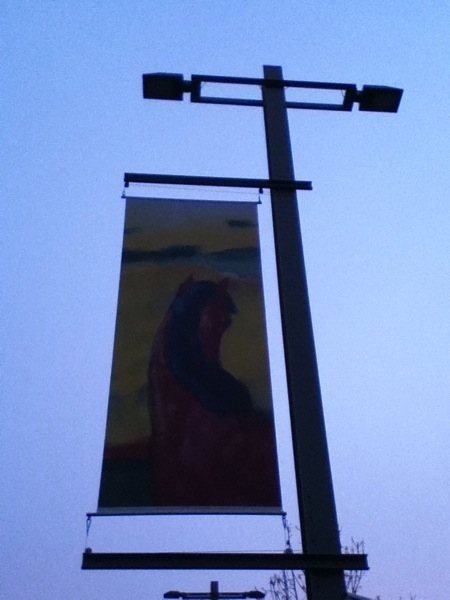


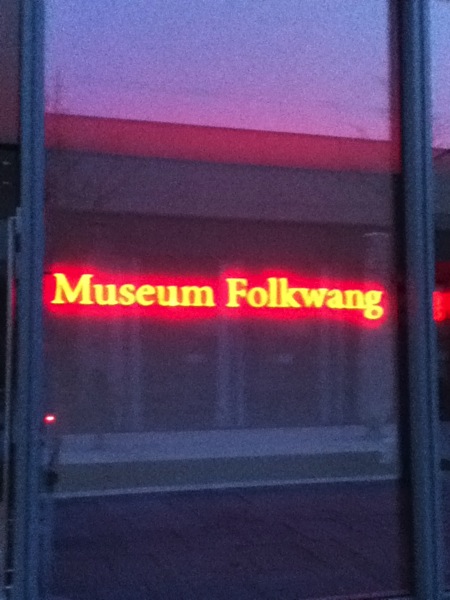

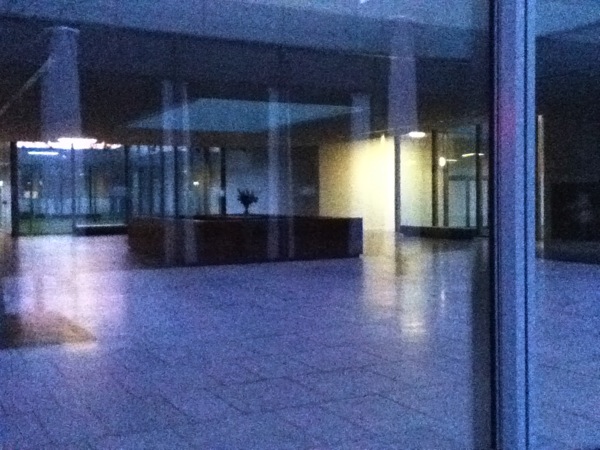



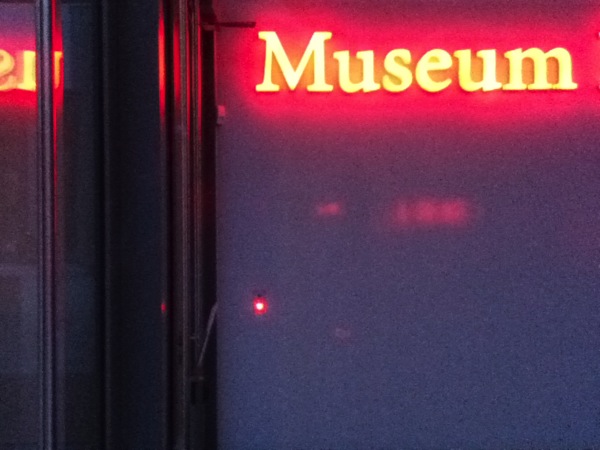
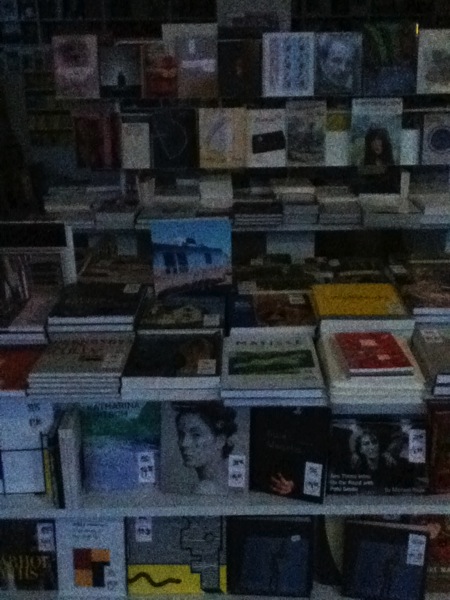


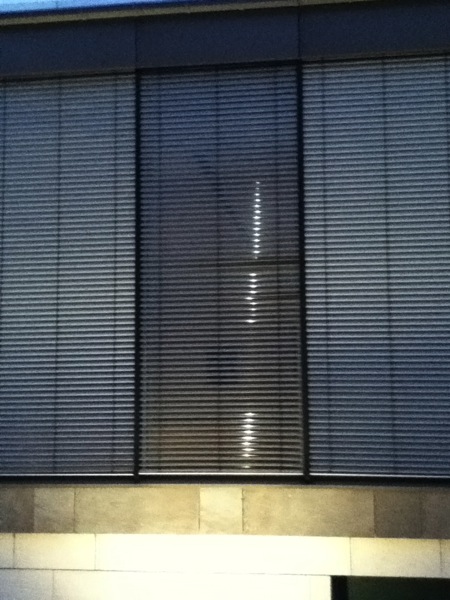
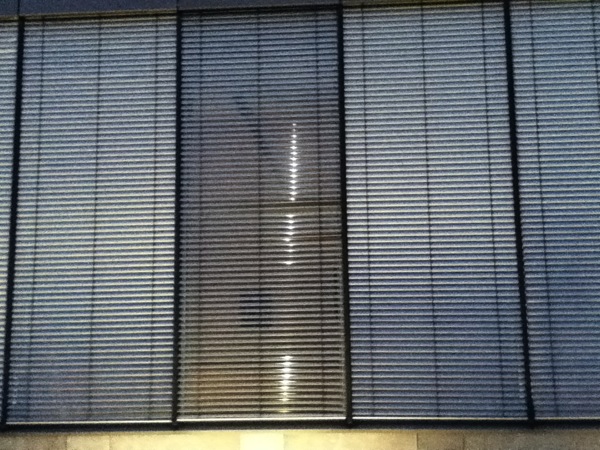

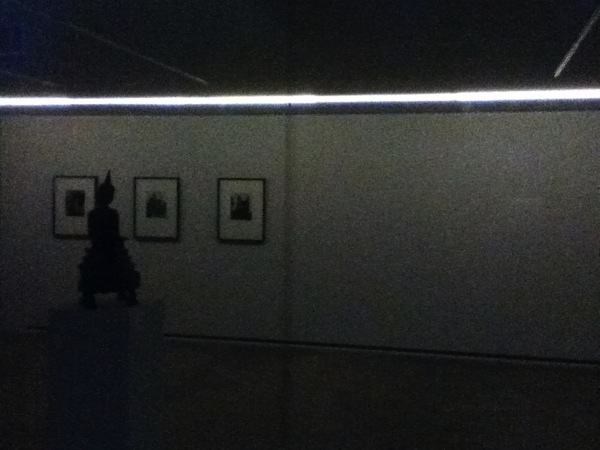
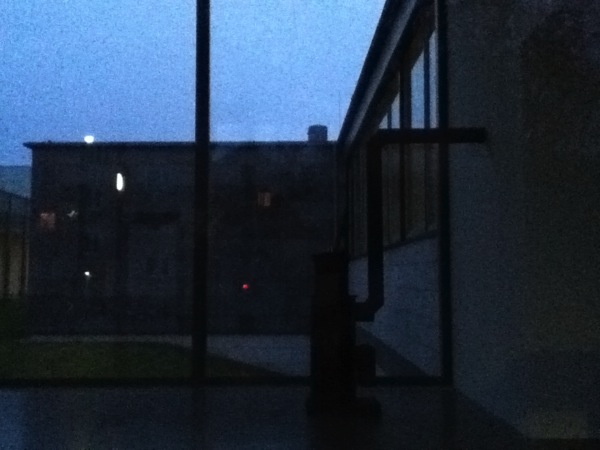
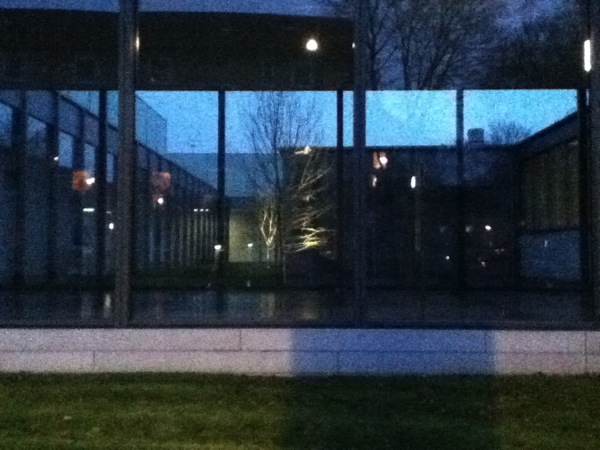

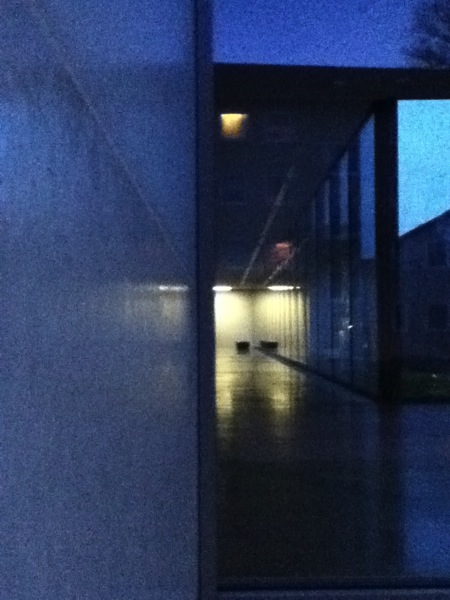
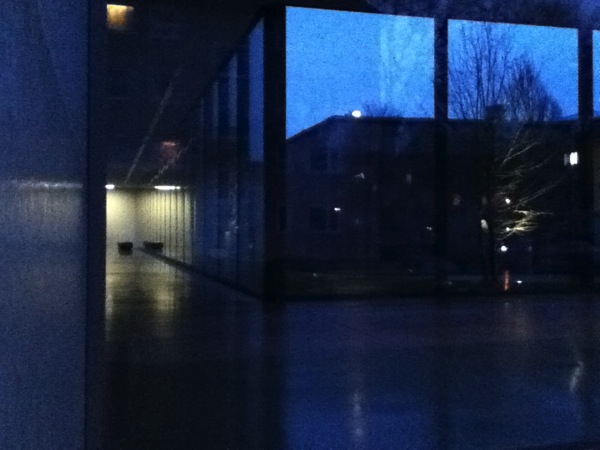

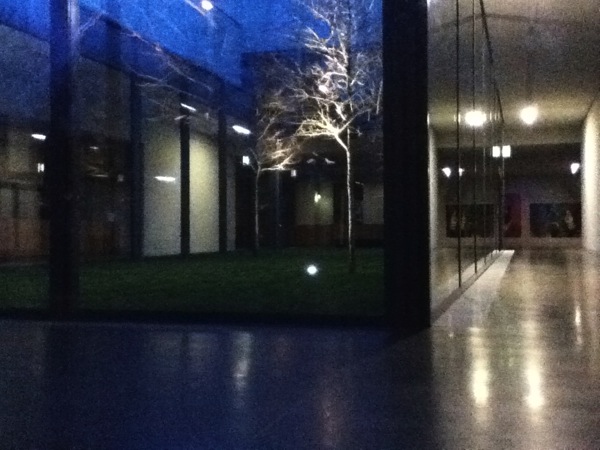
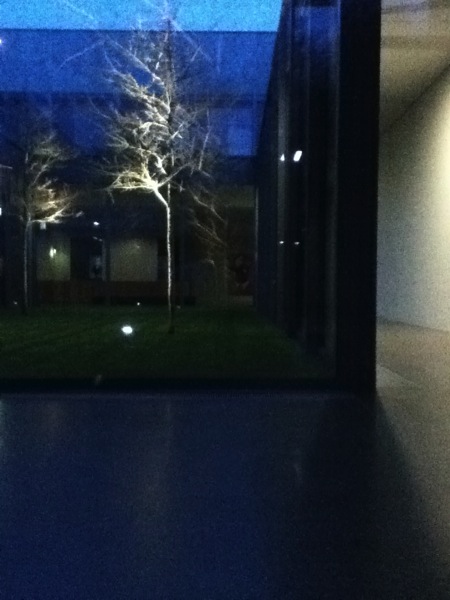
The icing on the cake of Museum Folkwang in Essen was delivered by David Chipperfield. He had done it before in Berlin. Tho Chipperfield delivered his very best to the city of Essen, it did quite re-gain the character of a cultural hotspot. It is not anymore. Certainly, tho many efforts were made and despite the fact that some high-sounding labels were pasted all over even Europe, in 2010 in particular. Let’s face it : in the east there is Berlin. In the west there is Cologne, far less but sill important there is Düsseldorf, further north there is Hamburg, south of Cologne it is Frankfurt and, eventually, Munich in the south. That’s it – these are the cultural centres. Inbetween a humble cute little place, in Mülheim an der Ruhr, engaged in fighting a daily fight to maintain its wonderful Ziegler Collection in the Museum Alte Post. Apart from that, a small spot in Aix la Chappelle with one of few Ludwig-Museums (this one — without causing too much harm — one should neglect). Nothing much left from what the Nazis destroyed thoroughly. All gone. What the most brutal slaughterings of decade long years of wars in centuries before did not achieve the Nazis managed within few years only. Cultural wasteland left behind. Despite all marketing — and attempts of re-branding — art’s cores destroyed by man murdered, wasted and annihilated. Agreed, a lot has been re-vitalized in post war eras. Splendid developments took place and endless efforts undertaken to restore, at least in part, what effectively was wiped out. Few might argue that most of the devastation has been overcome : quite some time since WWII. True. Only the scars are obvious, still, when it comes to Post-Modernistic Art, to Expressionsm, to what the Nazi lot tried to brand ‘degenarate art’ the so-called ‘entartete Kunst’.Most of it lost, pretended lost or destroyed (as we speak there is the Gurlitt-nazi-Art-Hoard, ‘Raubkunst‘, ‘Degenerate Art – Entartete Kunst‘, etc). The vast majority scattered all over the world and hidden within the awkward universes of banking treasure vaults, in Basel or Malaysia. Art-objects from that era and periods are literally priceless ever since everything, about and, from Impressionism got, so to speak, very precisely pin-pointed on quite a nano-millimetre scale. Snowden and the NSA, Menwith Hill and GHCQ know all about it. Very few surprizes to be expected. It is sort of a market in lockdown. A piece moved from A to Z, eventually. But no new findings, no unknown pieces to be found with Hebborn, van Meegeren and their well-educated fine companions all dead. Meaning: up to the era of Impressionism nearly all art is, or could, be accounted for, more or less — depending on whom to rely on whence reading out to us the records of the archives of the intelligence agencies.Issues are different when it comes to art on which hands were laid on in WWII.There are few issues still which could cause a scene. Few most surely being of obscene nature — of utterly disgusting nature indeed. ‘Inside Man’ pretty precisely depicts it tho by far not as boldly as the written records of financial transactions in the banking sector does.On that note it must be pointed out — an issue the germans and precisely those who voted in favour of that wabbly despicable and morally instable, Stasi-associated opportunistic and, in essence, intellectually totally incapable figure posing as a cheap teutonic Thatcher imposter-female, that A. Merkel person — they do do brush aside that the very companies which have been involved in slaughtering thousands in the Third Reich, the Krupp and Thyssen industries, only recently did fund the refurbishment of the Folkwang Musuem in Essen. Kind of a very bitter ironic touch to it indeed, methinks. And me is a native german. Fortunately born in the west, on the one and only true bank of the Rhine : the leftbank. And us leftbank-folks do have a very strong anti-napoleonic, and anti-authoritarian, history of not enjoying to be told what to think, or say, and once we made up our mind, for the better, we tend to stick to it — even if it takes us more than 600 years to — nearly — finish it. That is the time span it took us to build Cologne Cathedral. Because of it, and its people living close to it (certainly not merely because of some odd overpraised Roman heritage), it is Cologne which has been and still is a cultural hotspot, and probably always will remain to be one. Although Essen too has a wonderful cathedral and some cultural heritage one must no underestimate the minster of essen, not as large as other cathedrals but quite a jewel, stays more or less invisible to the visitor. This is — as becomes pretty soon obvious to anyone who visits Essen — because they do not quite love their Cathedral, nor do they love their Folkwang Museum. A pity.
post scriptum: Sachs, the Co-Founder of NYC’s MoMa did coin the expression of ‘the most beautiful museum of the world’ for the Folkwang when he visited it in 1932. He was overwhelmed then. Because he could see through some windows some of the unique Expressionst’s Art. Tho Musuems all over the world nowadays do tend to present themselves (even after opening hours) not like a biohazardous bunker with all windows and entries totally blinded, the days when being able to peek through a window on a terrific expressionstic painting at the Folkwang are gone. Images posted here, above, were taken on 25th of dec 2013, showing that the Folkwang Museum in Essen can, despite housing blocks located on two sides, be a bloody lonesome cold spot. On rare occasions one might catch a fascinating view into the Folkwang tho; late opening hours or at times when window-blinds not yet closed. Then there really is that magic Sachs must have experienced : advancing via backyards, through housing blocks or, via one of the two marginal streets, one can luckily catch what Chipperfield’s architectural design preserved : an outstanding glimpse on paintings by Marc, Renoir, Kandinsky, Delaunay, Manet, van Gogh, Mondrian and others. Head on they are visible; they present themselves to the worlds outside. From the pavement you can see them. You see them whilst parking your car or even whence driving by … it would be that place to pass by at night. A treat for a good night sleep.
